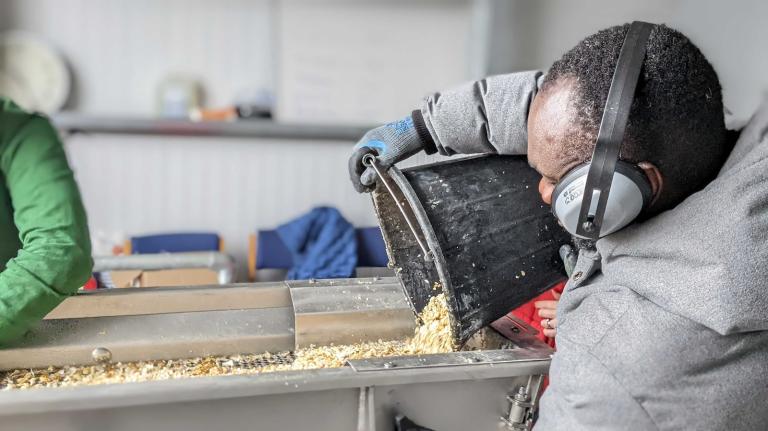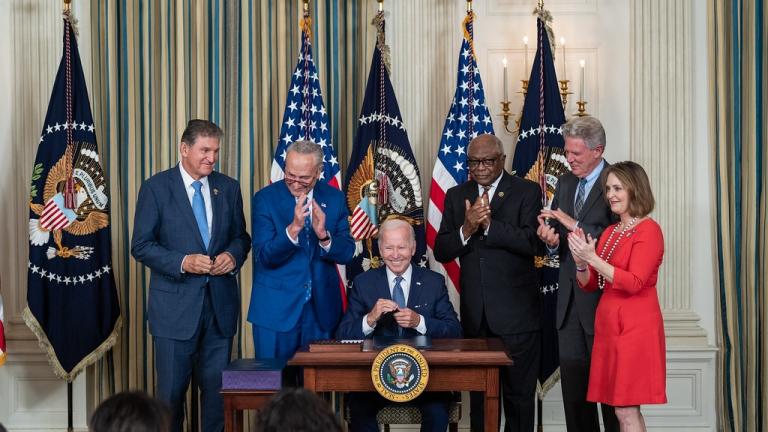Back in April, it already seemed obvious: Spooked by skyrocketing prices for corn, soy, and wheat, policymakers would push to put as much land as possible in the Midwest under the plow, environmental consequences be damned.
One of the first policy levers, I figured, would involve gutting the Conservation Reserve Program. The CRP is a federal scheme that pays farmers to take ecologically fragile land out of production — an act which benefits society but would otherwise not benefit farm owners, since idle land brings in no money.
By gutting the CRP, we get more land planted in corn and soy, and thus price relief for consumers. Or, so the logic goes. Back in April, I compared this dubious “solution” to the food crisis to the effort to drill in the Alaskan National Wildlife Reserve as a response to the energy crisis: i.e., no solution at all.
Well, just as Democrats are coming under increasing pressure to allow drilling in ANWR and other environmentally sensitive areas, the USDA is actively being hectored by farm-state politicians to let farmers plant land now enrolled in the CRP. And now the call to gut this vital program has gotten support, albeit quite measured and qualified, from a progressive source: The Washington Post editorial page.
Now, the above-linked WaPo editorial is no wild-eyed call to plow up the last bits of the American prairie and drench them in chemical fertilizers and pesticides.
Rather, the Post merely wants USDA secretary Ed Schafer to “consider opening up some of the [CRP] land to farming while continuing to protect the most environmentally sensitive acres.”
My question is, why support a scaling back of the CRP at all? As the Post itself acknowledges, “Farming land [currently] in the program isn’t a long-term solution” to high food prices. Land in the CRP tends to be what ag economists call “marginal,” meaning that its yields will be lower than most other land in the corn belt. That means that farming it won’t dramatically increase the supply of crops like corn and soy, and thus not provide much price relief for consumers.
Of course, if policymakers really wanted to bring down the price of food, they’d leave the CRP alone and instead take aim at the biofuel mandates that are currently drawing a quarter of the corn crop into ethanol factories. (One World Bank economist reckons that mandates and other government biofuel supports are responsible for as much as 75 percent of the recent run-up in food prices.)
The Post even acknowledges this point in its CRP editorial: “The United States should reconsider subsidizing the production of ethanol, responsible for much of the increase in corn prices since 2006.”
Well, I think the Post should reconsider its support for scaling back the CRP. If anything, the program should be scaled up, not trimmed.
I would direct the Post editorial writers to reread the excellent article their paper recently published by Joel Achenbach about the recent floods in Iowa.
Far from a “natural” disaster, devastation from the floods stemmed from egregious land-use decisions, Achenbach found. The main culprit: The very kind of relentless monocrop farming that the Post editorialists would like to see expanded into some CRP land.
Achenbach relates an interview he conducted with agriculture expert Kamyar Enshayan of the University of Northern Iowa:
[Enshayan] points out that the heavy rains fell on a landscape radically reengineered by humans. Plowed fields have replaced tallgrass prairies. Fields have been meticulously drained with underground pipes. Streams and creeks have been straightened. Most of the wetlands are gone. Flood plains have been filled and developed. “We’ve done numerous things to the landscape that took away these water-absorbing functions,” he said. “Agriculture must respect the limits of nature.”
Note that these conditions held sway with 34 million acres protected under the CRP. Do we really want to scale back this program?
Finally, I’d direct the Post editorialists to a 1979 book by veteran Post reporter Dan Morgan called the Merchants of Grain. Commenting on the last great boom in grain prices, the one that took place in the early-to-mid 1970s, Morgan writes:
The land itself exhibited the scars of … the grain economy. Along the North Carolina coast, Italian and Japanese investors bought tens of thousands of acres of marshy wetlands, cleared the trees with bulldozers and Caterpillar tractors, installed drainage ditches, and announced plans for “superfarms.” The incentives were corn at $3.00 a bushel and soybeans at $6.50; the world needed more food. But environmentalists in the state expressed concern about the effect of the runoff of chemical fertilizers, pesticides, and herbicides on the fish and wildlife in the coastal waterways. Investors also purchased marginal farmland in the western edge of the corn belt in Nebraska and ordered fragile grasslands to the plow. Groves of trees, planted under federal programs in the 1930s to prevent soil erosion, were bulldozed so that spindly irrigation systems that wheeled around a central well in 160-acre circles could move unhindered. The land irrigated by these watering systems was plowed, disked, and planted to corn. After the corn was harvested, the thin layer of topsoil blew away in many places, leaving gashes of dunelike sand in the fields of Nebraska.
The answer to the energy crisis isn’t to drill for crude oil and mine for coal at any environmental cost. Rather, it’s to figure out creative ways to conserve energy and invest in truly renewable, low-carbon sources.
Likewise, the answer to the food crisis isn’t yet more resource-intensive, ecosystem-destroying industrial agriculture. Rather, it’s to conserve the precious agricultural resources we have — and to invest in more sustainable production systems.

